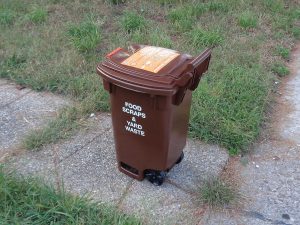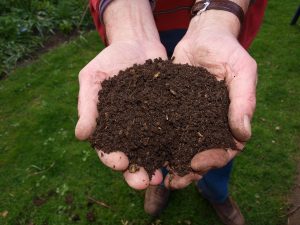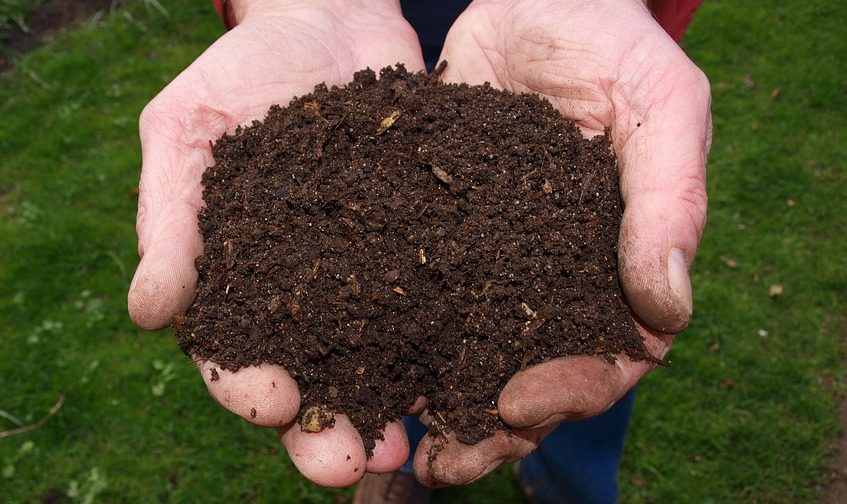
Everybody eats. Everybody also accumulates some amount of food waste.
Growing up, and well throughout my undergraduate career I thought like this: If you lived in a city, that food waste ended up in the trash can under your sink. At some point, the bag was tied up and tossed down the chute, or maybe left on the curb.
As an avid recycler I always thought composting was wonderful. I even encouraged my friends in the suburbs to do it in their homes. But I never did. How could I? I lived in a tiny apartment with my whole family; there was no space for another bin! Plus, I wasn’t growing anything, what did I need compost for? Even after taking several classes on food politics, one message seemed clear: composting, or efficient food waste disposal at all, was not accessible in urban areas.
Fortunately, I was wrong.
Recycling in the Big Apple
For decades, people have separated their glass, metal, paper, and plastics from the rest of their trash. But over the last few years, many cities have also introduced organics collection programs. These programs challenge the classic paper/plastic/metal separation by adding a new category: organic waste.
Considering that around 40% of food in the U.S. gets discarded or wasted, organics collection programs like that of the Department of Sanitation in New York (DSNY) are a promising opportunity to divert a significant amount of trash from landfills. As a New Yorker, hearing former Mayor Bloomberg refer to food scraps as “New York City’s final recycling frontier,” was almost revolutionary.
Launched in 2013, New York’s program is currently entirely voluntary, and these neighborhoods in the Bronx, Queens, Staten Island and Brooklyn are already receiving organics collection services. Apartment buildings in Manhattan and other boroughs can also participate through enrolling themselves. Between now and the end of 2018, these services will be expanded to the entire city in the form of curbside pickup, or access to drop-off locations.
As a native New Yorker and avid recycler, this program is a big deal! But having sifted through the trash cans of my schools, homes, and friends’ homes, I know that having bins does not necessarily mean efficient recycling. As NYC’s program expands, I want to use this post to help people utilize their own municipal organics collection programs by learning how to properly dispose of their waste.
Don’t Be Fooled

Curbside recycling programs have always been plagued by misinformation, resulting in incorrect sorting. Terms like “compostable,” “biodegradable,” and “recyclable” are plastered on food and non-food products alike, so well-intentioned people often place things where they shouldn’t be.
An important distinction to make is that although items are advertised as “compostable,” this does not always mean curbside programs are willing or able to accept them. Most materials are “recyclable” or “compostable” if you have access to facilities that are capable of processing them, but municipalities must accommodate high volumes of waste, with constraints on infrastructure and budgets.
It’s therefore essential to keep in mind the distinction between compostable and compostable for curbside collection. Since New York’s program is relatively new, and I’m biased, here’s a list of what can and cannot go into NYC’s brown bins.
Although there’s slight variation between cities about acceptable materials, this list is applicable to most urban organics programs because of their similar purposes and processes. Additionally, most cities and towns have their own online information regarding acceptable items, so feel free to double check before risking contamination!
Good for NYC Organics
Food items eligible for pickup:
- All fruits and vegetables–including skins, pits, seeds, cores
- Meat and animal products–including skin, bones, scraps, seafood shells, egg shells
- Dairy products
- Coffee grounds and tea leaves
- Pet food
- Any other leftovers from fresh or prepared foods–including expired or rotting food
- Tea bags
- Coffee filters
- Leaves, trimmings, grass, other small yard debris
- Napkins and paper towels
- Paper bags, plates, and containers that have been soiled by food (this means your pizza boxes that are dripping in grease and cheese!)
Fuhgeddaboudit (Bad for NYC Organics):
- Plastic bags (these can line the large brown bins, but acceptable liners that can mix with waste are made by BioBag, Glad, Ucan, Ecosafe, and Bag to Nature)
- Diapers
- Pet or human solid waste
- Packaging, wrappers, and containers (regardless of labeling)
- Medicinal waste
With Little Contamination, a World of Opportunity

Ideally, all streams of waste will be as uncontaminated as possible. But when it comes to organics, New Yorkers in particular have the potential to experience the rewards of an efficient program. Currently, DSNY is transforming the food waste it collects into compost. New Yorkers who are fortunate enough to have the space or lighting to garden can receive some of this compost for free at various events.
But even more excitingly, some of the organic waste is getting turned into biogas–a clean energy source derived from processing organic waste. The energy source has potential to contribute to NYC’s future clean energy goals, but only if the inputs are untainted.
In order to reap the benefits of the organics program, New Yorkers must follow the DSNY’s guidelines and sort their waste correctly. And hopefully, with some help, New Yorkers will be able to avoid contamination and maximize the utility of their organic waste through productive compost and cleaner energy.
Beyond NYC, other cities should look to establishing organics collection program. Each city, county, or region has its own unique list of what can and cannot be recycled/composted through curbside collection–so each area must find its own way of communicating acceptable items. With more urban organics collection programs, and more efficient disposal, the United States can gain cleaner energy, more nutritious soil, and fewer items in our landfills.

